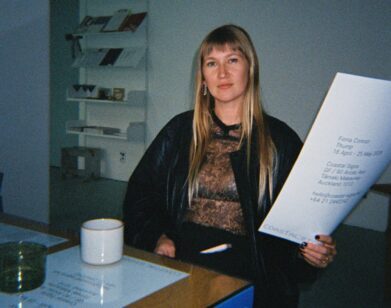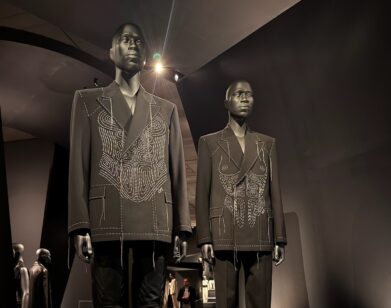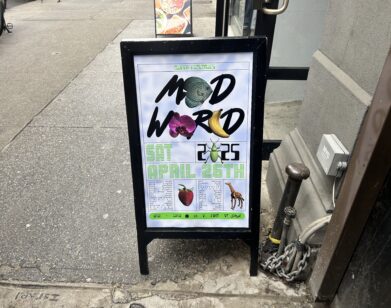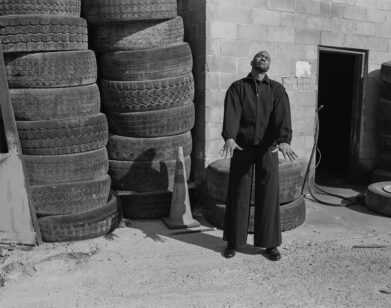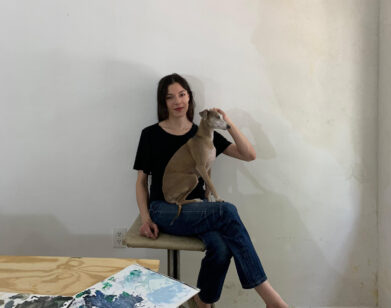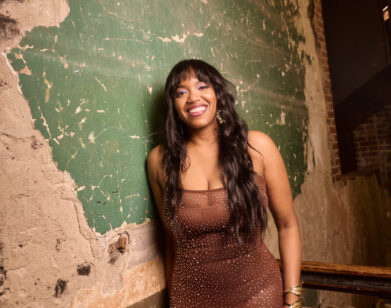In the (Half) Pipe

Kenneth Cappello was just a Houston-born sandlot kid with a skateboard and a point-and-shoot camera to keep him occupied—the perfect for training for Acid Drop, his latest book and art exhibit in a career capturing beautiful people in candid moments..
Just knowing that should differentiate Cappello from one-time mentor David LaChapelle; instead of photographing icons at their perverse peaks, he looks one frame removed from a purposeful, shiny megawatt pose—snapshots of subdued Jessica Stam on a cigarette break, circled in an awkward haze of smoke, Alison Mosshart’s neurotic fidgeting in the Kills’ “Black Balloon” video, T.I. as a perplexed pedestrian.
As a restless teenager in Houston in the 80s, Cappello thrived on unbridled adventure and risktaking. Before long, he made friends with the local misfits and skateboarding and punk. “It was what we lived for,” describes Cappello. “It was life; it was ‘skate or die!” It was also around that time that his dad bought him a cheap point and shoot camera to keep him busy. For the hell of it, Cappello starting taking pictures wherever he went with his friends. With those impromptu sessions, he unwittingly documented a portrait of a suburban subculture in the 80s; he also developed the brazen, off-the-cuff photographic approach that has come to define his later work. In Aperature’s book Acid Drop, Cappello’s formative, awkward years spent on the halfpipe and behind the lens are chronicled and placed into context of his now illustrious career. A corresponding art exhibit curated by Tim Barber is on view at Milk Studios.
COLLEEN NIKA: I read that these negatives were buried in your parents’ basement until they were recently unearthed. Why the decision to publish this set of photos now?
KENNETH CAPPELLO: They were in a shoe box in my old closet—I probably found them five or six years ago. I sat on them for awhile, then got around to them and realized I had a good body of work here. Tim Barber (of Tiny Vices) saw them and was like, “I wanna publish these one day!” So he did.
CN: Where are you in these photos?
KC: I am in some of these: I’m the kid with no shirt, red shoes, and a Cramps T-shirt, jumping off the car.
CN: Are these skateboarding photos pivotal to you or a fun non sequitur in your overall body of work?
KC: When I took these, I wasn’t trying to be a photographer: I was just into taking photos. My dad gave me a camera when I was twelve, and over the years, I’d pick it up and put it back down. I probably didn’t touch that camera for five-year periods at a time… (LAUGHS)
CN: When did that change?
KC: Later, in high school when I started going to punk shows. I started taking a lot of photos and would get them developed at the pharmacy photo lab. I had tons of photo albums. I was 15 or so when I took these skateboarding photos. By that time, I was super into it.
CN: What strikes me about these photos is that they seem almost prescient: a precursor to the types of snapshots we now all post on Facebook. How did your friends react to you documenting their playtime on camera?
KC: They were fine with it. But to do so wasn’t common, like it is now. I think it is kind of out of control now. You can’t do shit without seeing a stupid photo of yourself online!
CN: Was photography your destiny or did it develop as a social tool?
KC: I don’t know if it was my destiny, but I have always taken interest in photography.When I look back now, I realize that before I was skating, I was taking photos of my two parrots: Maria, the double yellow headed amazon and Barnical Bill, a blue front amazon. I would take photos of them sitting on stuffed animals. (LAUGHS) I just take pictures of things I like. I still do.
CN: The photographs serve as certain bittersweet, if unintentional portrait of youth in 80s suburbia. Is that a motif you would explore again this decade?
KC: Yes, for sure! Kids in suburbia look amazing. I still think they are more genuine before they all move to New York and become a sheep like everybody else!
CN: Yeah, subcultures seem to evaporate as soon as they are discovered. Would it even be possible to capture scenes like these now?
KC: Now?! Hell no! The scene doesn’t even exist. It’s totally different now: it’s a sport now on ESPN and shit, it’s mainstream. When these photos were taken, it was very special; it was underground. We were looked down upon because it was rebelious. People didnt like skaters then—especially in Texas.
CN: What matters most aboout these photos now?
KC: It’s the clothes, the hair, the way the film looks. It’s the attitude. It’s the time and the place—it’s when skateboarding was amazing.
CN: I have to admit that I don’t know much about skateboarding. What is an Acid Drop?
KC: An “acid drop” is when you ride a skateboard and drop off a high surface like a loading dock or a car. It’s very 80s!
CN: Was anyone taking photos of skaters back then?
KC: I remember that Bryce Kanights took good skate photos; I also loved all the consolidated videos from late 90s. But when I took these photos, this wasn’t a real form of photography.
CN: So maybe you were a pioneer for the niche.
KC: No, when I took these early photos, I didnt even really know what photography was. I’d never seen a photo book, I was just a kid with a camera that my dad gave me. All I knew is that if the little meter in the camera was in the middle I could take the photo!
CN: Before long you were working under David La Chapelle. What did he teach you?
KC: I learned where photos came from. Like, “Shit! This is a photo studio! This is where photos are taken!” I learned what a client was, who the photo assistants and art directors and stylists were and what they did. David was inspiring: he was into what he was doing and he was smart; I was opened to a new world. Before that, I was working in bar, in the back washing dishes and emptying ash trays. Sometimes, I toured with a few bands, selling their t-shirts on tour. Once I got on a photo set with David, I was like, “Oh shit! Okay, let’s do this.” It was then I realized I was going to be a photographer.
CN: I admire the spontaneity you capture in your work. As an established professional, are you still able to shoot impulsively?
KC: Yes, 100%! I have a 20 page editorial lined up tomorrow. And I havent a clue what I’m gonna do yet! (laughs)
Acid Drop is on view through June 13. Milk Studios is located at 450 West 15th St, New York.

